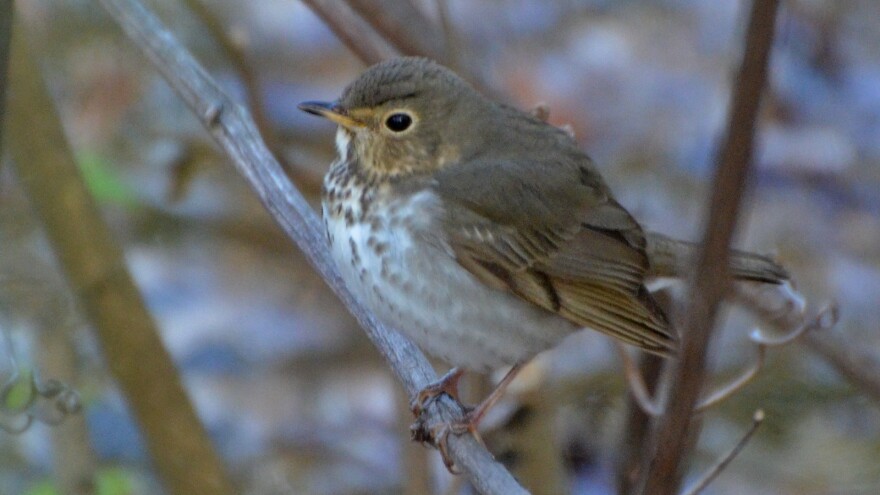In 1999, West Nile virus snuck into the United States. Like many border-crossing diseases, the virus wreaked more havoc in its new home, where those it infected hadn't developed immunity. While the virus infects humans, and can be fatal, it was deadliest in a different population: North American birds.
When the virus first appeared, Luke George, a researcher at Colorado State University who studies birds, said there were reports of dead birds. Lots of them.
"That was how people knew it had showed up in North America is they were seeing lots of dead crows and jays, especially in suburban areas."
George and other scientists knew West Nile killed other birds too, but many thought after an initial die-off most populations recovered. No one really knew the true effect on North American birds, until George and some other researchers decided to take a closer look.
What they discovered is striking. They learned that not only did West Nile kill millions of birds when it first hit the United States, but that it also continues to kill large populations of some bird species. The study was published in the journal Proceedings of the National Academy of Sciences.
George and his colleague Ryan Harrigan, a scientist at the University of California Los Angeles, used maps of West Nile occurrences among humans to decide where to look for die-offs in birds. They then took data from 500 stations where birds are regularly captured, counted and banded, and released, to find out about population changes.
One of the impacted species was the red-eyed vireo. It's a small, olive-green songbird with, you guessed it, a red eye. If you've ever walked in an Eastern forest, you've probably heard its chirp. There are 130 million red-eyed vireos in North America. When West Nile first arrived, it wiped out almost a third of them. Over 30 million died because of West Nile, George and his colleague estimate.
The good news about the vireos is that they stopped dying. Their population took a dive when West Nile arrived, but appears to have recovered later, at least according to the data George looked at, which covers 1992-2007.
Other birds weren't so lucky.
Out of the 49 species the scientists examined, half of them experienced die-offs from West Nile. Half of that group -- about 12 of the 49 species the researchers looked at -- never recovered. Each year, West Nile continued to kill those groups of birds. That, said George, was unexpected. Previously, scientists thought some birds died off at first but then the species made a comeback.
"And what we found was for many species West Nile was continuing to have a negative effect for many years after it arrived," he said.

This happened for birds like Swainson's Thrush, a songbird with a high-pitched call and chirps people sometime mistake for the peeping of frogs. George doesn't think West Nile virus kills these birds directly, but that it weakens them enough "so that they tend not to survive very well when they pick it up."
This is the first time researchers have looked at the long term effects of West Nile on birds, and the findings leave them with plenty of unanswered questions, said George. First, they would like to look at the period from 2007 to 2015, to see if birds are continuing to be affected by West Nile.
Also, the researchers are interested in learning if there are some similarities in the species of birds that are more susceptible for West Nile. What makes those 12 species of birds like the Swainson's Thrush more susceptible to the virus over the long run, where other species are less affected? He wonders if there are other, less common species that are also more susceptible, but just weren't included in the study.
"If you have certain groups that tend to be much more susceptible, then those are the ones you need to be concerned about when West Nile shows up."
The answers could have implications for bird lovers both casual and committed. Knowing which birds are more vulnerable could help conservation groups know which habitats to try to protect or which birds might need extra help.







